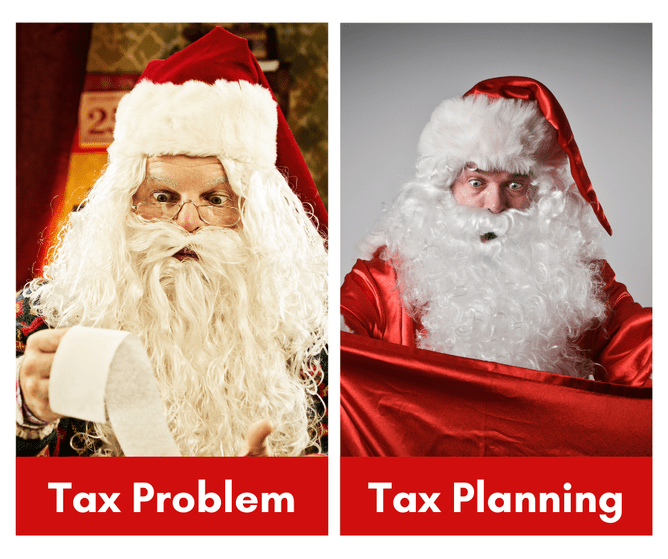What responsibility does an individual have to pay tax in New Zealand?
As a NZ resident you are responsible for paying Income tax on any taxable income.
TAX RESIDENT
You become a New Zealand tax resident when the first of these happens:
- you’ve been in New Zealand for more than 183 days in any 12-month period
- you have a permanent place of abode in New Zealand.
TAXABLE INCOME
Most income you get is taxable. This means we’ll include it in your end of year automatic calculation, or if you file an individual tax return – IR3 then you’ll need to declare the income.
Taxable income can include income from:
- working including salary, wages or self-employed income
- benefits and student allowances
- assets and investments including Kiwisaver and rental income
- overseas income.
TAX PERIOD
The tax year is from 1 April to 31 March. The aim is that you pay the right amount of tax at the right time so that you don’t overpay during the year or have a bill to pay at the end of the tax year.
TAX RETURNS
Returns (if required) must be filed by 7 July each year, depending on the income type and/or the country of source. An extension of time until the following 31 March is available for taxpayers with a tax agent. Individual’s file separate returns. There is no provision for joint returns for spouses. Failure to file a return (if required) may result in prosecution and penalties. There is no requirement to file a return for most individuals who earn only employment income, or income where tax is deducted at source at the appropriate rate.
PAYMENT OF TAX
Residual income tax (RIT) is the amount of income tax payable by a taxpayer after deducting tax credits but before deducting any provisional tax paid. Every taxpayer who is liable to pay RIT exceeding NZD 5,000 for an income year from 1 April 2020 will be a provisional taxpayer for the next year.
PROVISIONAL TAX
Provisional tax helps you manage your income tax. You pay it in instalments during the year instead of a lump sum at the end of the year.
You'll have to pay provisional tax if you had to pay more than $5,000 tax at the end of the year from your last return. $2,500 before the 2020 return.
It's payable the following year after your tax return. For example, if your residual income tax from your 2020 return is more than $5,000, then you'll need to pay provisional tax during the 2021 tax year.
PAYING TAX IN YOUR FIRST YEAR OF BUSINESS
If you use the standard, estimation, or ratio options, you will not need to pay provisional tax during your first year of business. If you use the accounting income method (AIM), you’ll only pay provisional tax when you make a profit, even during your first year.
However, your first year in business is not tax free. Any income tax from your first year in business is usually due by 7 February the following year. If you have an agent, it will be due by 7 April.
This may mean you must pay income tax for your first year in business at the same time as paying provisional tax for your second year in business.
You can choose to make voluntary payments of tax during your first year of business to help spread the cost. If you make voluntary payments, you may be able to get an early payment discount.
PROVISIONAL TAX OPTIONS
Standard option
- The standard option is useful if your income is steady or increases over the next year.
- The standard option is based on your previous year’s residual income tax (RIT) plus 5%. It’s useful if your income is steady or increases over the next year.
- If you use the standard option, you’ll pay 3 equal instalments during the year. If you're registered for GST and file 6-monthly GST returns, you'll only pay 2 instalments. You may have more tax to pay once you’ve filed your income tax return.
- We’ll use the standard option for provisional tax unless you choose otherwise.
- You can change from the standard option to AIM or the estimation option at any time, but you cannot change to the ratio option during the same year.
Standard or estimation option Instalment dates
If you use the standard or estimation option, you'll generally pay 3 instalments of provisional tax. If you're registered for GST, you'll have other instalment options you can choose.
INSTALMENT DUE DATE
1 28th August
2 15th January
3 7th May
Estimation option
- The estimation option is useful if you know your income will decrease over the next year.
The estimation option can help you avoid overpaying or underpaying your provisional tax. It may be right for you if you already pay provisional tax and:
- your income will decrease over the next year
- you have a loss which can be offset against your income
- your income will increase a lot and your residual income tax (RIT) will be more than $60,000 higher than what the standard option has calculated
- you’ve gone from untaxed income like self-employment, where you must pay your own tax, to salary or wages where your tax is already deducted before you’re paid.
You must use the estimation option if you’re choosing to be a provisional taxpayer and did not have to pay provisional tax last year.
You can estimate what you think your residual income tax will be and pay that instead. If you do not think you’ll have any residual income tax to pay, you can estimate your provisional tax at $0.
You can estimate your provisional tax as many times as you like up until the final instalment date. or, until you return is due - if you're using the temporary loss carry back measure.
Underestimating your provisional tax
When you use the estimation option, keep a close eye on your profits and estimate again if it looks like you'll earn more than you expected. You could be charged a penalty or interest if your provisional tax estimate is too low compared with your actual residual income tax once you’ve filed your return.
Accounting income method (AIM)
- When you use the accounting income method (AIM) you only pay provisional tax when your business earns a profit.
The accounting income method (AIM) is available to individuals and companies with a yearly turnover under $5 million.
Using AIM will suit your business if:
- your business is growing
- you're new to business
- your income has reduced significantly since last year and is hard to estimate
- you have irregular or seasonal income
- it's hard to forecast your income accurately
- you have accounting software or want to start using accounting software.
You'll only pay provisional tax when your business makes a profit. If you make your payments in full and on time, we will not charge use of money interest.
You can sign up to use AIM any time during the year.
Accounting income method (AIM)
If you use AIM, your due dates for paying and filing your statement of activity will line up with your GST due dates. If you do not have a standard balance date of 31 March, then your software will work out you’re filing and payment dates. If you file monthly GST returns, you'll file a statement of activity every month.
INSTALMENT DUE DATE
1 28 May
2 28 June
3 28 July
4 28 August
5 28 September
6 28 October
7 28 November
8 15 January
9 28 January
10 28 February
11 28 March
12 7 May
If you file 2 or 6-monthly GST returns or you are not registered for GST, you'll file a statement of activity every 2 months.
INSTALMENT DATE DUE
1 28 June
2 28 August
3 28 October
4 15 January
5 28 February
6 7 May
Ratio option
- The ratio option is useful if you're GST registered, file monthly or 2-monthly returns, and your income tends to vary.
The ratio option lets you match your provisional tax payments with your business cashflow. It also bases your provisional tax payments on a percentage of your GST-taxable supplies. You need to let us know you want to use this option at the beginning of the tax year.
Who can use the ratio option?
The ratio option is useful if your income varies, or you have seasonal income. You must meet all these criteria to use it:
- You've been in business and registered for GST, for the whole of the previous tax year, and part of the tax year before that.
- Your residual income tax (RIT) for the previous year, 2020 or later, is greater than $5,000 and up to $150,000.
- You file your GST returns monthly or 2-monthly.
- You're not a partnership.
- Your ratio percentage that we calculate for you is between 0 and 100% (we'll let you know if it's not).
Applying to use the ratio option
You need to apply in writing, via myIR or by phone. You'll need to make sure you:
- tell us the year the election is to start
- make the request at or before the beginning of the income year the ratio election is for.
If you want to use the GST ratio method, you must meet all the requirements and elect to use it before the start of your income year. If you have a 31 March balance date and wish to use a GST ratio for the 2021 year - you neeed to inform us of your election on or before 31 March 2020. The start or effective date will be the first day of the income year after the date the election was made - the date we received the request. We cannot backdate the effective date.
Ceasing the ratio option
You can stop using the ratio option at any time. You just need to let us know by phone or email.
If you stop using it before the first payment due date, you can choose to use the standard or estimation option to calculate. The usual use of money interest rules will apply from this time.
If you stop using it after the first payment date, you must use the estimation option to calculate for the rest of the year.
You must stop using the ratio option if:
- you cease your GST registration
- any of your GST returns are overdue by 60 days or more
- your ratio percentage change is no longer between 0% and 100% (we'll let you know if it's not)
- you change your GST filing frequency to 6-monthly
- a return of income is filed or amended where the residual income tax is calculated at below $5,000 or above $150,000 from the 2020 year.
Use of money interest when using the ratio option
If you apply the ratio option correctly and pay the provisional tax calculated, you will not:
- need to pay use of money interest (UOMI) if your payments fall short of the end of year liability or you cease the GST ratio option. Use of money interest will apply from the date you cease using the ratio option.
- receive use of money interest if you pay too much during the year because of using the ratio option.
Ratio option
- If you use the ratio option, you’ll pay your provisional tax in 6 instalments. If you do not have a standard balance date of 31 March, use our Tax due date calculator to work out your payment dates.
INSTALMENT DUE DATE
1 28 June
2 28 August
3 28 October
4 15 January
5 28 February
6 7 May
If you are having trouble making payments for your provisional Tax, check out what TAX POOLING is and whether it is appropriate for you?






